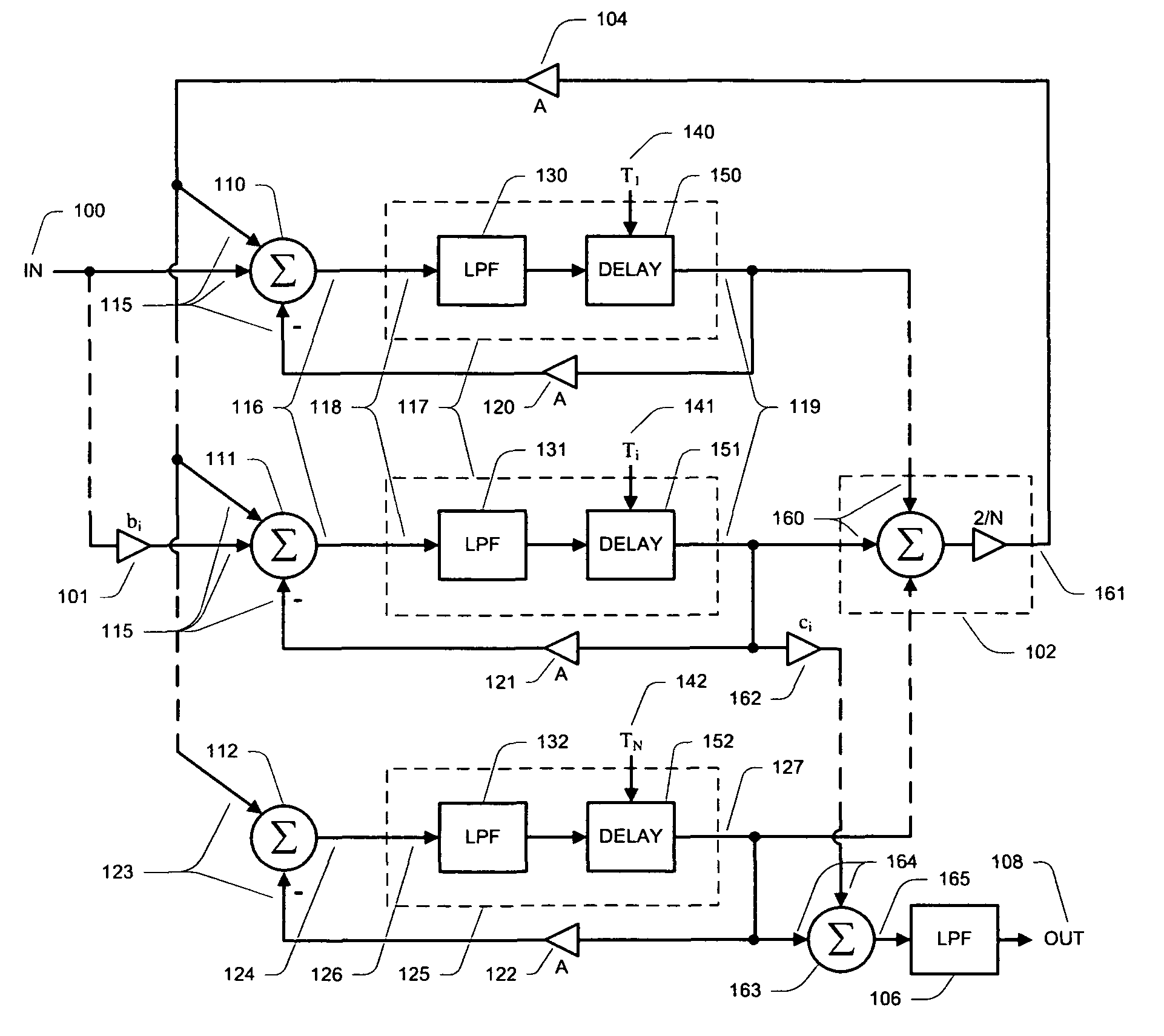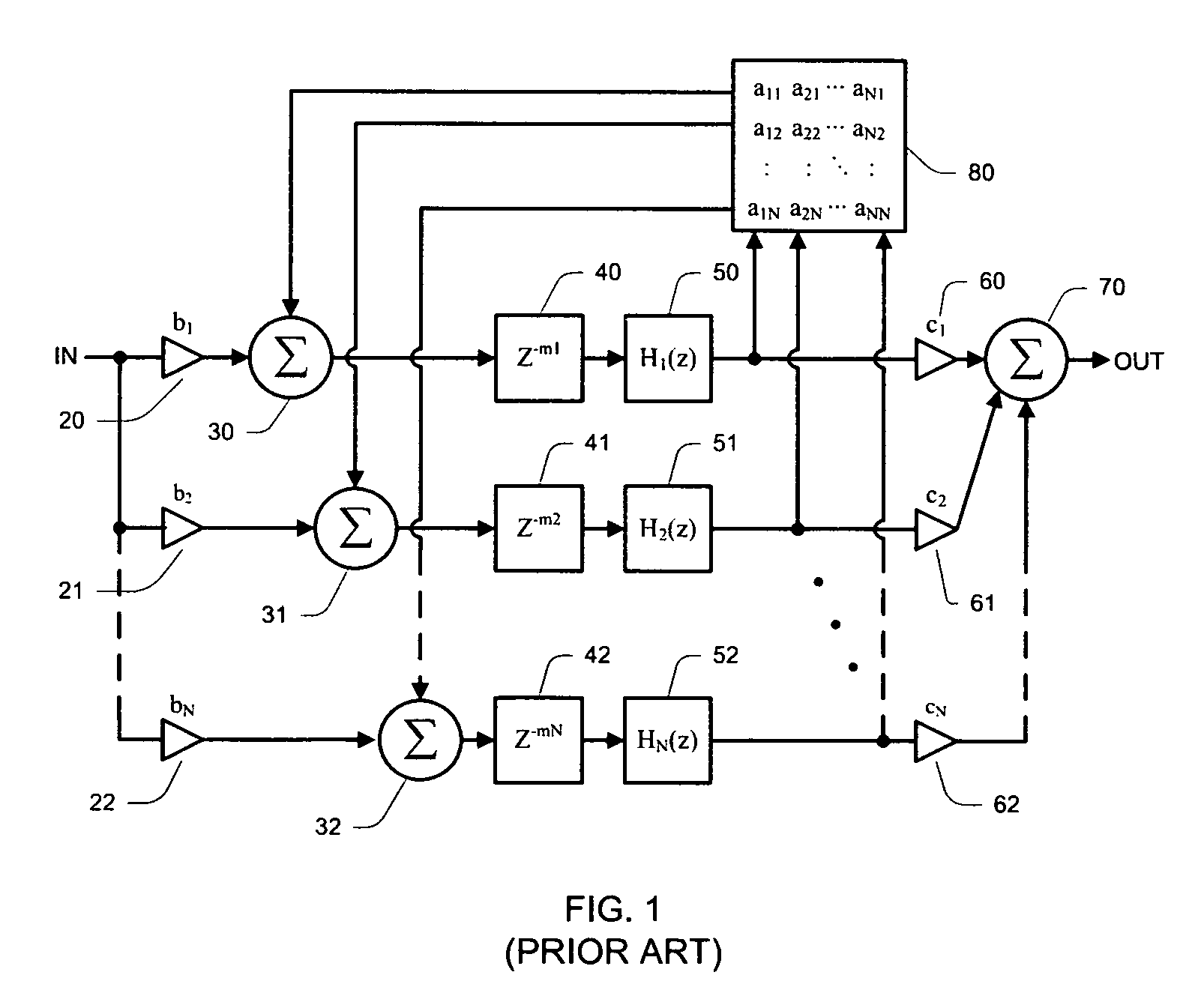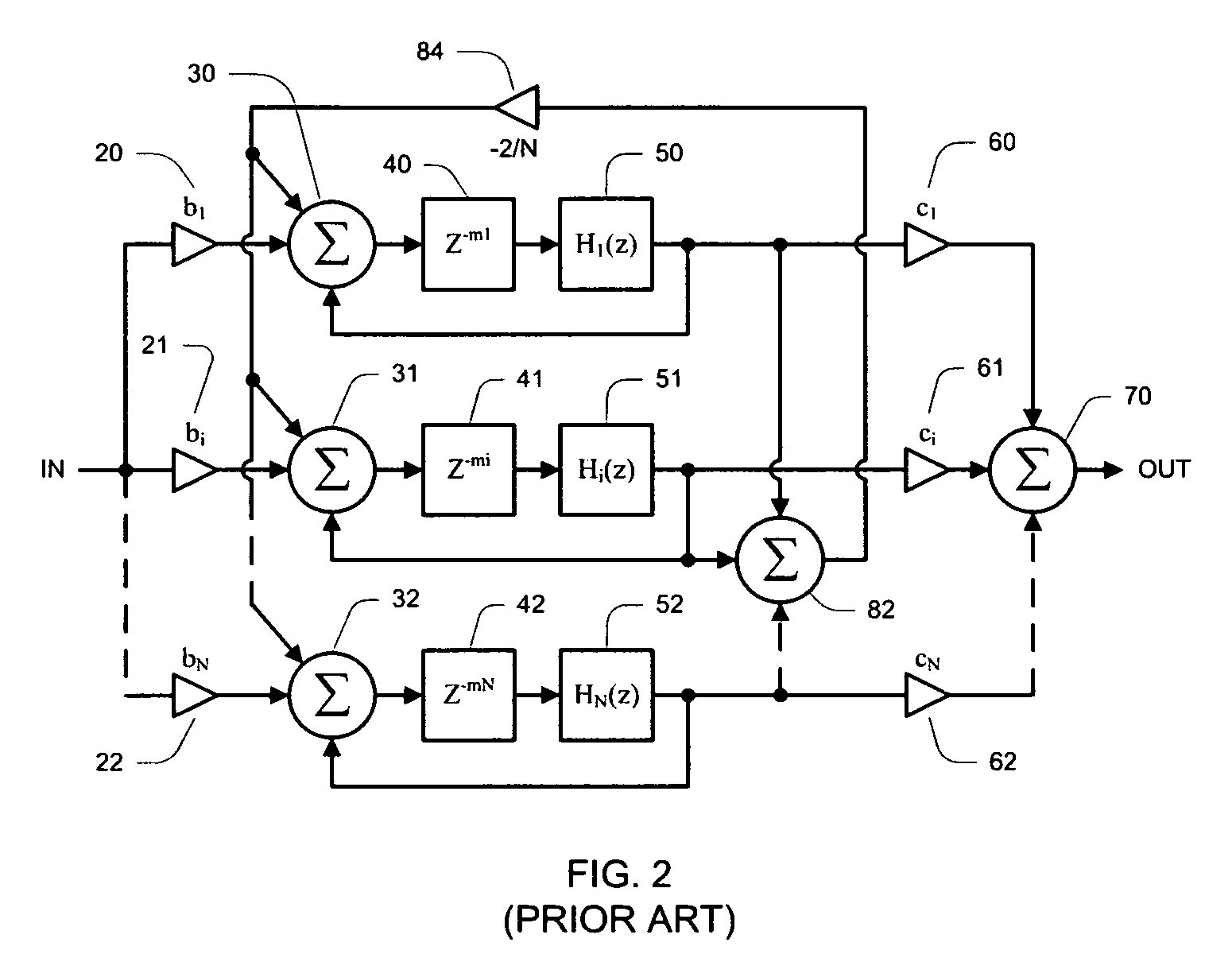Apparatus and method for artificial reverberation
a technology of artificial reverb and apparatus, applied in the field of audio signal processing, to achieve the effect of reducing the number of delay lines, high quality, and cost-effectiveness
- Summary
- Abstract
- Description
- Claims
- Application Information
AI Technical Summary
Benefits of technology
Problems solved by technology
Method used
Image
Examples
Embodiment Construction
[0037]Referring now to the drawings, there is shown in FIGS. 3, 5, &6 a preferred embodiment of the apparatus and method for artificial reverberation 10 and in FIGS. 3a &4 a first alternative embodiment of the apparatus and method for artificial reverberation 10. The apparatus and method 10 allows electronic creation of artificial reverberation without the requirement for digital signal processors or the extensive engineering time and labor associated therewith. The present art minimizes cost by combining digital delay elements with an analog feedback network and maximizes sound quality while using a minimum of delay elements.
[0038]FIG. 3 illustrates a block signal flow diagram of the preferred embodiment of the present art. Although a total of three delay elements are shown, any number of delay elements greater than one is within the scope of this invention. An input signal is first applied or fed to input signal port 100 and then applied or fed to input summing nodes 110 and 111 a...
PUM
 Login to View More
Login to View More Abstract
Description
Claims
Application Information
 Login to View More
Login to View More - R&D
- Intellectual Property
- Life Sciences
- Materials
- Tech Scout
- Unparalleled Data Quality
- Higher Quality Content
- 60% Fewer Hallucinations
Browse by: Latest US Patents, China's latest patents, Technical Efficacy Thesaurus, Application Domain, Technology Topic, Popular Technical Reports.
© 2025 PatSnap. All rights reserved.Legal|Privacy policy|Modern Slavery Act Transparency Statement|Sitemap|About US| Contact US: help@patsnap.com



